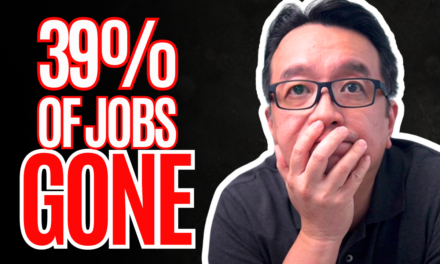
Financial independence through investing is EASY if you understand THIS

If you want to get financially independent, I’m here to tell you it can be done through investing in good assets, and that it’s a lot simpler than a lot of gurus make it out to be.
Most of the investing advice out there is just overcomplicated, and that leads to people losing money, or just becomes unsustainable because of the amount of work involved.
In this article, I’m going to show you just 3 things that if you get right, will unfuzz your investing mind, lead you to being able to create the wealth and income to afford to live a purposeful meaningful life, mastery not required.
So in case we’ve not met, my name’s Tim Low and I help people create multiple income streams using their Purpose instead of mastery, so that they can live purposeful, meaningful lives.
The first thing I want to point out is that the truly wealthy, don’t get there through earning a good salary and saving money.
Don’t get me wrong – these are both important – but will be a really long tough slog if you want to be financially free.
That’s because, most wealth, comes from investing, meaning, owning assets that grow in value.
I’ll give you an example. Tim Cook, Apple’s CEO is worth $1.9 Billion dollars. His base salary is $3.4 million. That’s a great salary. In 2022, he got a 12 million dollar bonus. That’s a total of about 15 million in pay. Not too shabby.
But even if he saved all his 15 million, he would need to work for 127 years to be worth $1.9 billion.
The secret is in his ownership of appreciating assets, such as his shares in Apple. His total compensation for 2022 was around $99 million dollars. $83 of that $99 million were stock options and restricted stock units.
He also owns 3.28 million Apple shares.
Mark Zuckerberg and Elon Musk draw just $1 in salary. Most of us earn a bigger salary than them. But unlike most, they’re by no means scraping by… all because they own assets that grow in value.
And that takes me to the number one thing you need to know about investing and growing your wealth, the easy, uncomplicated way…
Understanding what investing really is.
You need to understand what investing is, because when you don’t understand investing, you’ll cling to bits of information from here and there, what this guru said, or the latest indicators, or the media reports…
But once you understand investing, which by the end of this video, you’ll see isn’t complicated at all, then you’ll learn to cast aside all that complication, and be able to make up your own mind.
And to do that, we’ll be starting somewhere a little unexpected, because I won’t start by telling you what investing is…. We’ll get there.
The first thing I find I need to untangle for a lot of our students when they first come to us is the difference between 2 common market activities – Investing and Trading.
Sounds simple enough, but I’m consistently shocked at how often investing and trading are mixed up.
Investing is just owning good assets and letting them grow in value. Trading doesn’t care about whether the asset is good, or what the value is. Only the price movement.
They are completely different things, yet one of the most common things we need to untangle not just for the newbie investor who’s understandably confused, many experienced investors as well. Because this is really is one of the HUGE ways you end up losing money in the markets.
I’ll give you an example – what do you do when the share price falls? Do you cut losses? Do you average down?
Well, a trader will say cut losses, and sell. An investor will say, if it’s a good company, buy more.
And I learnt this the hard way. Back in 2008, during the housing crisis, when the markets fell nearly 60%, I lost a multiple six figure sum, because I was learning from 2 different gurus, one who was fundamentally a trader, and another who was fundamentally an investor. One told me to cut losses, and the other told me to average down, meaning to buy more. If I had been as clear on the distinction between trading and investing as I am today, I would likely have lost a lot less, or even possibly made a profit.
And that’s just one example. I see people investing using indicators like RSI, MACD, and trading signals. And I see people trying to trade and doing valuation. It’s all mixed up.
Indicators are for trading, because in trading you don’t care about the value. You care about things like sentiment, momentum. If a stock is overvalued, it can go higher, and you take that ride.
Whereas in investment, you care about value, that’s why you do the valuation, not the momentum.
Do you invest or trade or both? Do you draw a clear distinction between investing and trading? Let me know in the comments. And if you’re getting value from this, then like this video, and don’t forget to subscribe for more content like this, and if you’re listening on this Podcast, leave us a review, it means the world to me, and a huge thank you in advance…
Investing is simple, because when we invest, we only care about 2 things.
Value and Price. The Value reflects the quality of the company. And you must remember, with investing, you’re not buying a lottery ticket when you buy a stock or share or a company. You’re buying a piece of a business. And that business generates money.
I believe that one must only invest in good business that generate money, or good Income Producing Assets. And I have a video linked above if you’re watching on Youtube, and in the description below the Video and Podcast that goes into that a lot deeper.
In short, income producing assets, produce income, and that enables us to give them a value, based on the income it’s producing.
That value, reflects, in part, the quality of the business. But there’s more to that, which I’ll get to in point 3 shortly, but for now, just remember that the value reflects the quality of the business, and the amount of money it brings in.
Value isn’t price, and price isn’t value. Warren Buffet puts it like this – Price is what you pay, value is what you get.
So, the price of a burger may be $10, and the value is getting a quick, convenient meal.
So, if price is below value, it’s a good deal for the buyer, and if price is above value, then it’s a good deal for the seller.
And as an investor, we use this to make sure we’re getting a good deal when we buy and a good deal when we sell.
An investor doesn’t need to look at indicators, momentum, etc, all an investor cares about is that he buys when price is below value, and considers selling, or taking some money off the table when price is above value. Simple as that.
Quality of the business
A prime rib costs a lot more than a fast food burger. They’re both beef, but one’s a better quality of beef, and hence a higher value, and hence a higher price.
And for investing, you must only buy quality. Why? Because remember – we’re buying when price is below value and we sell when price is above value, then ideally, we want value to go up.
If we buy when price is below value and then value falls below our price, then now price is above value and we sell, and we lose money.
So we need to invest in good assets where the value will go up.
The best way to do that is to see investing in a company, as being an owner of that business. Not a lottery ticket holder, but an owner of a business – but a completely hands off owner because we have a whole management team running the show for us. So, what our job is, is to pick the right business and management team.
Because as long as it is the right business, and you’ve got the right team managing it, they’re going to increase income and in an Income Producing Asset, increased income means increased value.
Increased value, means that whether price is above or below value, we’re making money…
Now, to tell if a business has an increasing value over time, we can look at the businesses’ profitability. Is its Net Income, which is how profitable a business is, increasing over time? If it is, then its value is also increasing over time. If it’s not, then its value isn’t increasing, and it might even be decreasing. That’s because when we invest in a business as an income producing asset, the more income it generates, the more its value is, and the less it generates, the less its value is. Make sense?
And there’s lots of websites out there that show us this – for instance Yahoo Finance.
Go to Yahoo Finance, pick any company, and under Financials, you will see the net income for the last 4-5 years. Is this on an increasing trend? TTM stands for Trailing 12 Months or the last 12 months.
Even if its income is on an increasing trend, how do we know that Value will continue to increase? Well, most businesses don’t turn on a dime. If they’re a good business with a good management team, and it’s been doing well, then something needs to happen for it to change direction.
We can also click on the Analysis tab and you can see what it’s Earnings Per Share, which shows us how much the company makes in relation to the number of shares it has. We’re buying shares and we can see the amount of earnings for each share that we’re buying.
I need to pause here and say, that’s not money in your pocket, because EPS is not dividend. EPS shows how profitable a company is per outstanding share, and earnings needs to go through a process before it can become dividend that’s paid. But the point here is that you want to see that EPS trending up.
Because if you know that the net income is trending up, and EPS is trending up, then it’s very likely that value per share will trend up.
Price often goes up in tandem with value, although price is eratic in the short term, but in the long term, trends with value, and so the price is also likely to increase.
And on this page, you can also see what analysts estimate the future growth of that business to be.
You see the key to growing your wealth is accumulating good assets with value that increases over time, and if you want to delve into what a good asset is, you need to check out this video, and don’t forget to like and subscribe, and check out this video if you want to afford to live a Purposeful meaningful life…

























Recent Comments